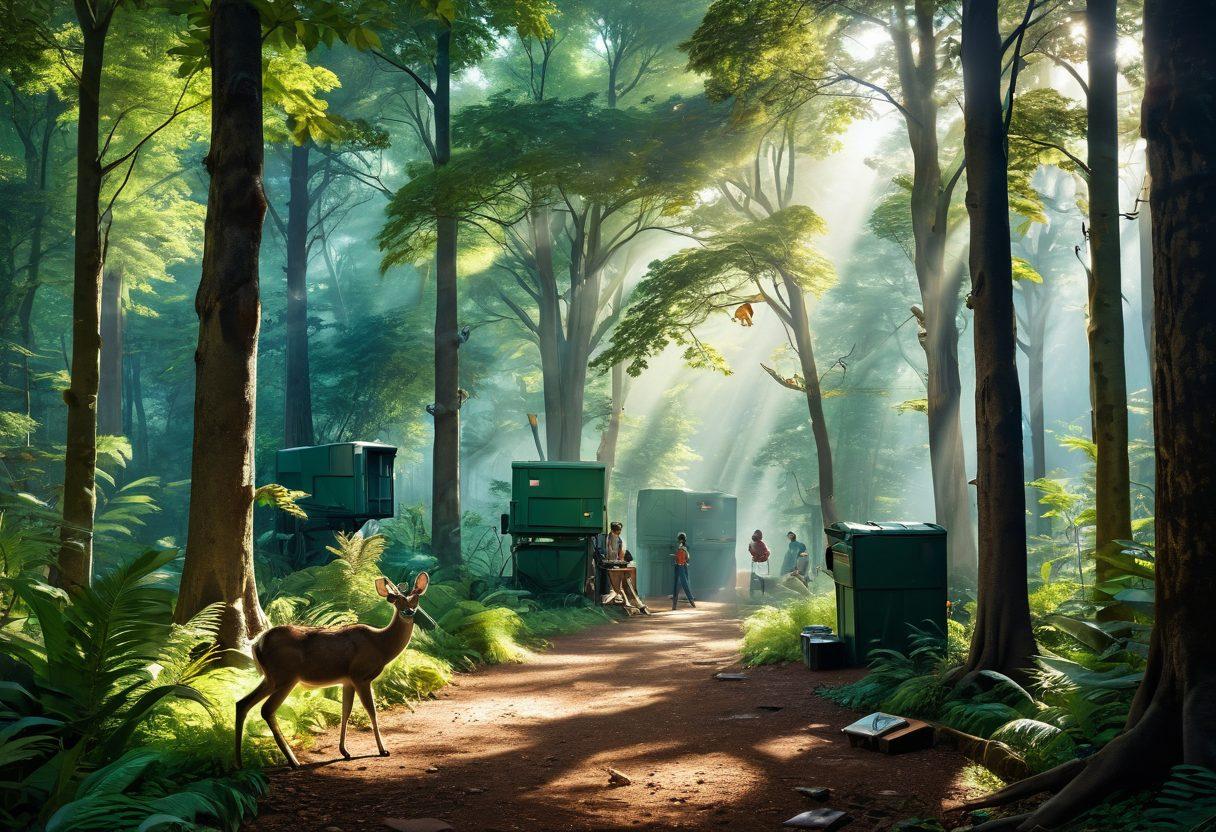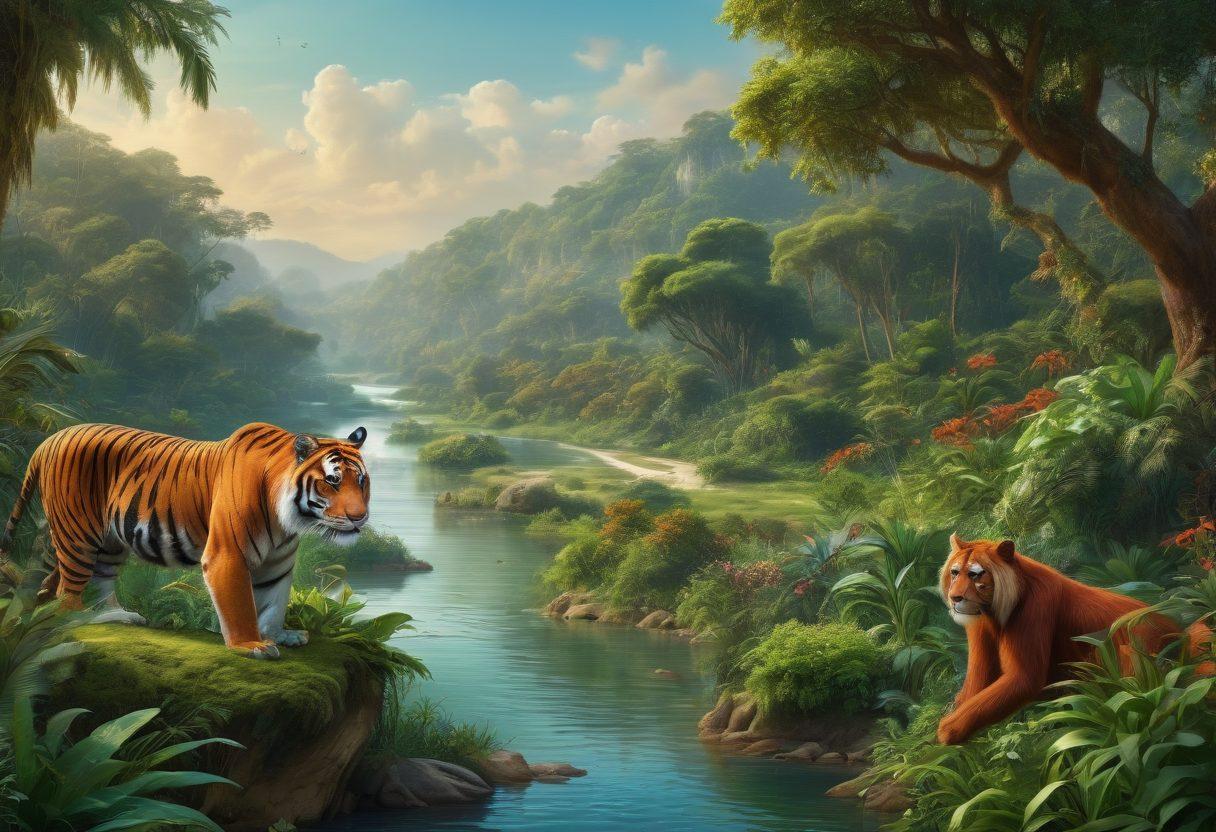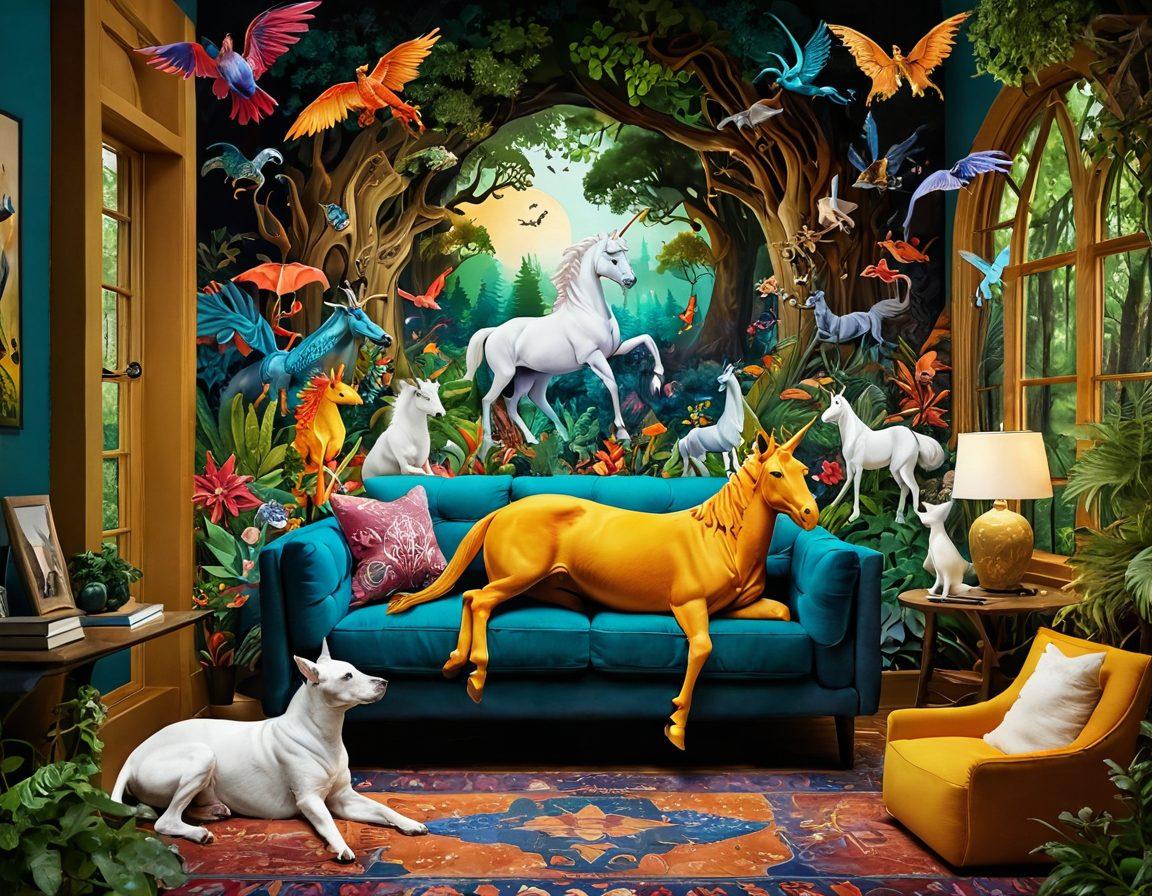Exploring the Wild: Unraveling the Mysteries of Animal Behavior and Conservation
Have you ever wondered what goes on in the mind of a wild animal? Imagine the rustle of leaves, the flick of a tail, or the sudden silence that hangs in the air, hinting at nature’s hidden secrets. As we dive into the depths of animal psychology and behavior, we find ourselves uncovering the intricate connections that bind each species within their ecosystem. From the playful antics of domestic animals to the majestic movements of mythical creatures in our imaginations, understanding the creature characteristics of wild animals can help us pave the way toward effective nature conservation.
Animal psychology is not just limited to the study of our beloved pets; it encompasses a vast range of fauna across the earth. Have you ever watched a meerkat standing guard while its companions forage? It’s a fascinating display of their social structure and communication, highlighting the importance of community in the animal kingdom. Through the lens of 'beast studies,' we begin to realize that every creature plays a role in maintaining the balance of their habitat. Just like each stroke in a painting contributes to the overall masterpiece, each species contributes to the splendor of our planet's natural history.
Let’s take a moment to appreciate the emotional lives of wild animals. Studies have shown that elephants exhibit signs of grief, chimpanzees have complex social bonds, and even birds display unique personality traits. How does this knowledge impact our understanding of animal ethics? When we recognize that these creatures possess intricate emotional and psychological lives, it becomes imperative to advocate for their welfare and the protection of endangered species. The question then arises: how can we, as stewards of the earth, ensure that future generations of wildlife experience the same thriving ecosystems that we enjoy today?
Storytelling is at the heart of wildlife photography and observation. Each snap of the camera captures not just a moment but a story waiting to be told. For instance, when we focus our lenses on the delicate nature of a nesting bird or the exuberance of a playful otter, we are drawn into their world. We feel their joy, their struggles, and their triumphs through the viewfinder. How many 'creature features' could the world unveil if we only paused to observe? Engaging in these moments allows us to reflect on our inherent connection to the wild and reminds us of the responsibility we share in preserving these beautiful beings.
In an age where urbanization often threatens the very fabric of ecosystems, recognizing the need for nature conservation has never been more urgent. Bridging the gap between wild animals and humans is essential. By learning about animal behavior, we can inspire change in how we interact with and protect our planet's diverse species. Visiting national parks, engaging in community initiatives focused on habitat preservation, or even becoming an advocate for animal sciences can be powerful steps toward making a difference. So, the next time you gaze into the eyes of a wild animal, remember: every creature, whether real or mystical, has a story to tell, and it's up to us to listen and take action.
Conservation Chronicles: The Critical Role of Habitat in Protecting Endangered Species
Have you ever stopped to wonder why certain species of wildlife are teetering on the brink of extinction? The answer often lies within the intricate web of their habitat. From dense rainforests to expansive grasslands, the home of these creatures not only supports their physical needs but also shapes their behavior and survival strategies. As we delve into these Conservation Chronicles, we will uncover the critical role that habitat plays in the protection of endangered species, reinforcing the idea that conservation of these ecosystems is crucial for our planet’s health.
Imagine a majestic tiger prowling through a verdant jungle, or a delicate blue butterfly flitting from flower to flower. These scenes are more than just beautiful images; they are vital snapshots of the complex relationships that exist within nature. In the realm of animal psychology, each species has evolved to thrive in its specific habitat, developing unique behaviors and adaptations. To put it simply: without their habitat, wildlife is lost. This leads us to an intriguing question: what happens to the animal kingdom when their homes are threatened? The answer is not only fascinating but alarming, as many wild animals face dire consequences when their ecosystems become compromised.
But let’s not solely focus on the dire aspects of this issue. Nature conservation offers us a glimmer of hope. By actively participating in habitat protection initiatives, we can safeguard not just the creatures roaming the earth but also the delicate balance of our ecosystems. Take a moment to reflect on your own backyard; perhaps it houses domestic animals or even the occasional mythical creature in your child’s imagination. Just as we nurture our own environments, so too must we extend that care to the wild fauna that rely on intact habitats for their survival. What actions can we take to contribute to this cause?
As passionate bloggers and nature enthusiasts, we have the power to raise awareness through storytelling. By sharing the plight of endangered species and their habitats, we can illuminate the secrets of creature characteristics that often go unnoticed. Imagine a blog post featuring stunning wildlife photography alongside tales of the majestic creatures it captures. Such a combination not only enthralls the reader but also educates them about the perils faced by species on the brink, enhancing public connection to animal sciences and nature conservation.
In conclusion, the relationship between habitat and the survival of endangered species is undeniable. As we continue to explore the mysteries of animal behavior and the critical need for conservation, let’s embrace our role as guardians of the earth. Each effort counts, whether it’s through responsible blogging, supporting conservation projects, or simply spreading the word about the importance of preserving these vital ecosystems. As one notable conservationist said, “The earth does not belong to us; we belong to the earth.” Let's honor that connection and ensure that our actions today nurture the wild creatures of tomorrow.
From Mythical Beasts to Domestic Pets: Understanding the Diversity of the Animal Kingdom and Our Responsibility
Imagine wandering through a dense forest, surrounded by the sounds of chirping birds and whispering leaves. As you delve deeper into this vibrant habitat, you encounter majestic creatures, both mythical and real. The wonders of the animal kingdom unfold before you, revealing a world filled with extraordinary species and rich life forms. But how well do we truly understand these fascinating beings? From the mythical creatures of our imagination to the domestic pets that warm our homes, each species holds unique creature characteristics that deserve to be explored. This journey through the diverse fauna of our planet not only invites us to marvel at their beauty but also ignites our responsibility towards nature conservation and the ethical treatment of animals.
What do we know about animal psychology and the intricate interconnections of our ecosystem? Animal behavior and studies are crucial for unraveling the mysteries surrounding our planet's wild and domestic animals. As we observe their interactions, from the playful antics of a domesticated dog to the fierce predations of a wild lion, we discover the underlying principles that govern their actions. These insights are invaluable, reminding us that every creature, no matter how mythical or domestic, plays a specific role within the complex web of life. Can you think of a wild animal that surprised you with its behavior? Maybe there’s more to these creatures than we’ve previously understood? If the animal kingdom could talk, what stories would they tell us about their habitats and the challenges they face?
As we dive into the world of creature features, one can’t help but feel inspired by the incredible adaptations that various species have developed over time. For instance, take the endangered species like the snow leopard, whose thick fur keeps it warm in extreme cold, silently stalking its prey through the mountains. Or consider the vibrant patterns of tropical birds, which serve as a reminder of the delicate balance in nature, emphasizing the stunning beauty and functionality that have evolved throughout natural history. This leads us to a crucial question: How can we cherish and protect biodiversity while appreciating the intriguing differences between wild and domesticated animals?
When we talk about animal ethics, it’s essential to highlight the right of every creature to thrive in its natural environment. Unfortunately, urbanization and human exploitation threaten countless species. Every time we choose to support wildlife photography or engage in beast studies, we contribute to raising awareness of this endangered world. Let's take a moment to connect with these magnificent beings; each photograph captures a story, a fleeting moment in time that inspires conservation efforts and education. Are there actions we can take to reduce our ecological footprint and support the habitats these creatures depend on?
Ultimately, understanding the majestic diversity of the animal kingdom comes with a keen sense of responsibility. We must embrace our role as stewards of the earth, championing nature conservation initiatives and advocating for wildlife protection. The balance of our ecosystems rests in our hands, and ensuring a future where wild and domestic animals thrive requires collective effort. It begins with education — engaging in discussions from animal sciences to practical conservation efforts can start to make a significant impact. So let us put our knowledge to action, delve into the depths of animal psychology, and honor the creator’s wonders, for every being plays a part in the story that is life on this planet. What change can you make in your own life to become more involved in protecting the world’s fauna?


